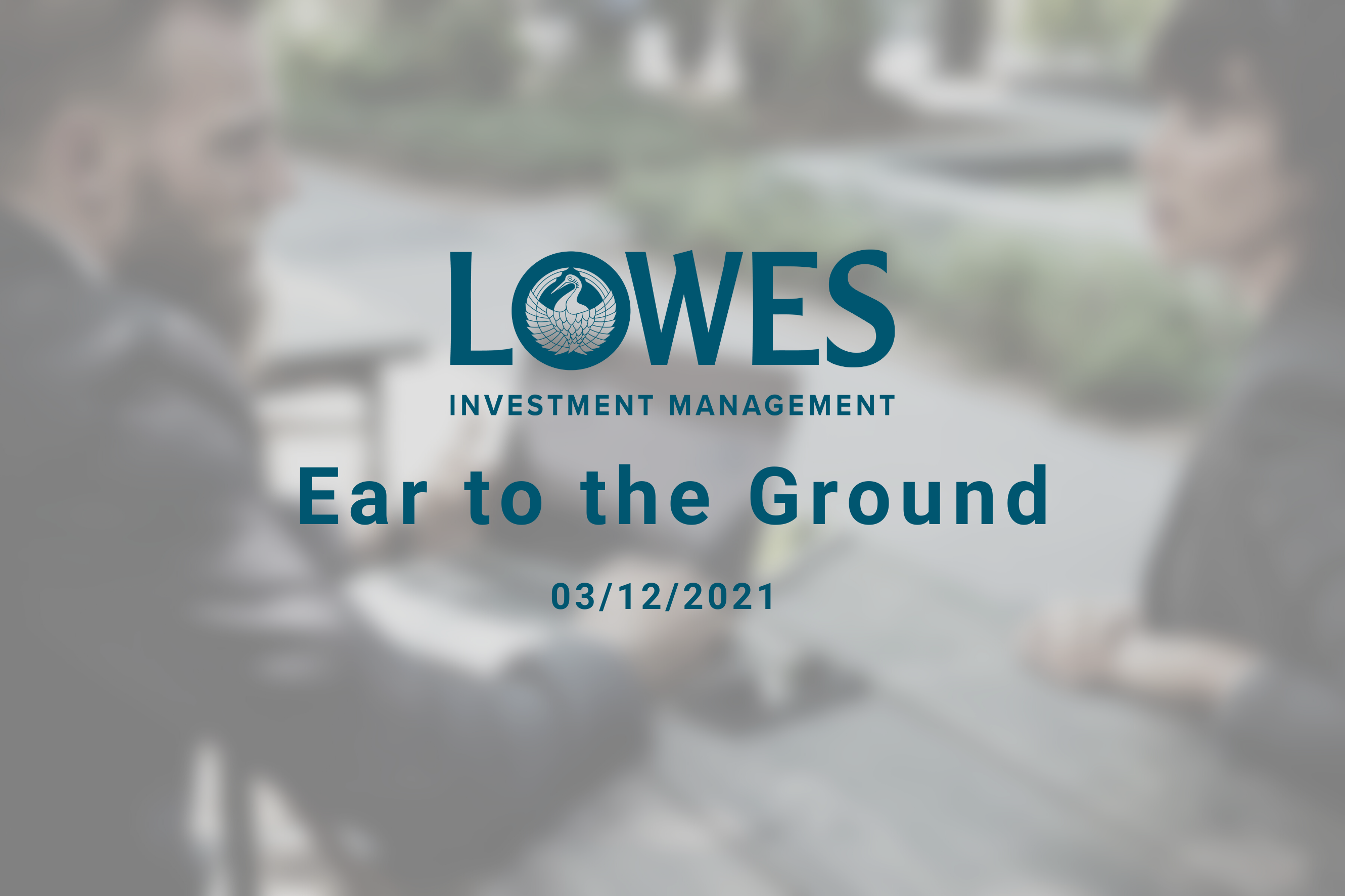Ear to the ground
03 December 2021

Transitory: Of brief duration. Tending to pass away. Not persistent.
It seemed rather fitting to start with a definition this week of what transitory actually means. For a prolonged period of time now we have heard central banks reiterating that higher inflation was transitory and that it would revert to the target level. This week however we saw an about turn from Robert Powell, the US Federal Reserve chairperson. To quote the man himself, “We tend to use [the word transitory] to mean that it won’t leave a permanent mark in the form of higher inflation. I think it’s probably a good time to retire that word.”
The bond market reacted in a way that was perhaps not expected. Shorter term yields rose in expectation that rate hikes were now firmly on the table. Longer term yields however were less moved and have actually fallen. They seem less convinced which has led to a further fall in the spread between 10 and 2 year Treasury yields. Perhaps long bond investors are looking further into the distance. The correlation between manufacturing ISM prices paid and CPI inflation would appear to suggest that US CPI is reaching its peak.
I guess a lot will depend on what happens now with wage inflation. In the US the United Auto Workers union have just ratified a new 6 year contract with Deere & Co. The contract includes a $8,500 restart bonus, an immediate 10% rise in pay, two 5% rises and two large bonuses through 2026. Wages will be adjusted each quarter based on inflation. Seems inflationary to me.
This week we saw the release of the December OECD economic forecast. The global economy still remains below the projection made at the end of 2019, despite its strong recovery. The economy is expected to have grown this year by 5.6% but is then expected to moderate to 4.5% in 2022 and 3.25% in 2023. With regard to inflation they expect consumer price inflation to peak at close to 5% at the end of this year before falling to around 3.5% by the end of 2022 and 3% in 2023.
This week the Omicron variant came to the fore. Whilst a lot more news and data is required on its severity it certainly brought some volatility it asset markets, with the VIX spiking above 30 for the first time since the 1st quarter. Indices appear to have settled for now whilst they wait for clarity.
In the US, equity markets have been supported this year by a sharp rise in private equity buyouts. Figures this year are at the highest seen in the last 16 years. Other investors meanwhile continue to observe valuations of US equities relative to history. Looking at equity market cap to GDP, never before has this ratio been as high in the US as it is today.
Data from the Bank of America also suggests that the driver and composition of company earnings growth and share price movements in the US have seen something of a change. This analysis shows that between 1997 and 2009, 48% of the price returns from the S&P 500 was attributable to earnings growth. Between 2010 and present however that figure has fallen to only 21%, using correlation as the measure. At the same time between 1997 and 2009 changes in the Federal Reserve balance sheet had no correlation with the change in the market cap of the S&P 500. This is perhaps to be expected, or a low figure at least. Since then however, following numerous rounds of quantitative easing, that correlation figure has increased to 52%.
Still, trends or drivers of change can change themselves, something perhaps we need to be aware of. To quote Ray Kurzweil,
“I became interested in long term trends because an invention has to make sense in the world in which it was finished, not in the world in which it started.”
This article is for information purposes only and should not be construed as advice. We strongly suggest you seek independent financial advice prior to taking any course of action.
The value of this investment can fall as well as rise and investors may get back less than they originally invested. Past performance is not necessarily a guide to future performance.
The Fund is suitable for investors who are seeking to achieve long term capital growth.
The tax treatment of investments depends on the individual circumstances of each client and may be subject to change in the future. The above is in relation to a UK domiciled investor only and would be different for those domiciled outside the UK. We strongly suggest you seek independent tax advice prior to taking any course of action.
Subscribe Today
To receive exclusive fund notifications straight into your inbox, please complete this form.